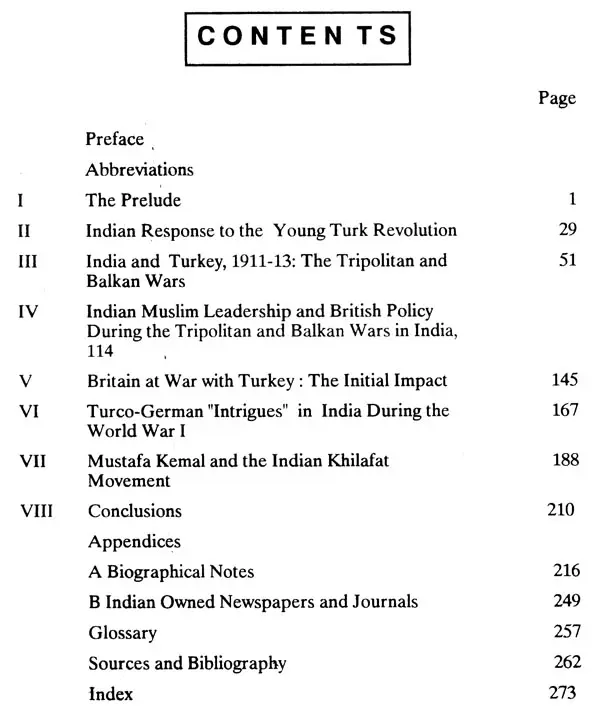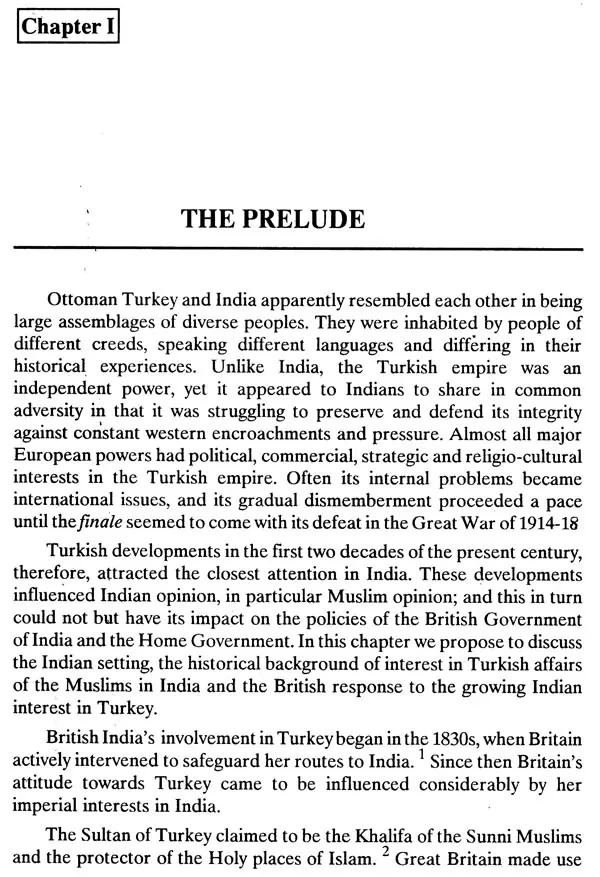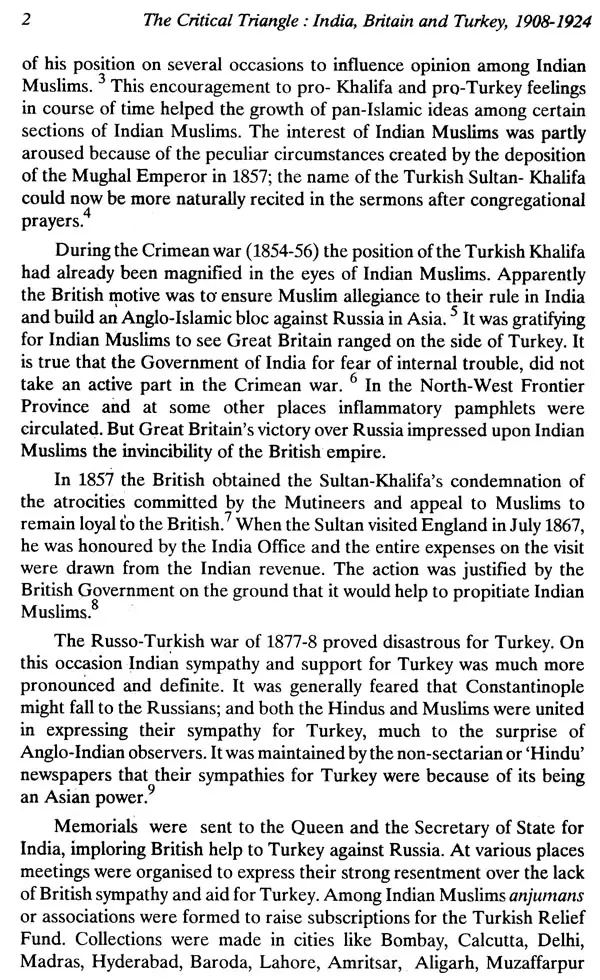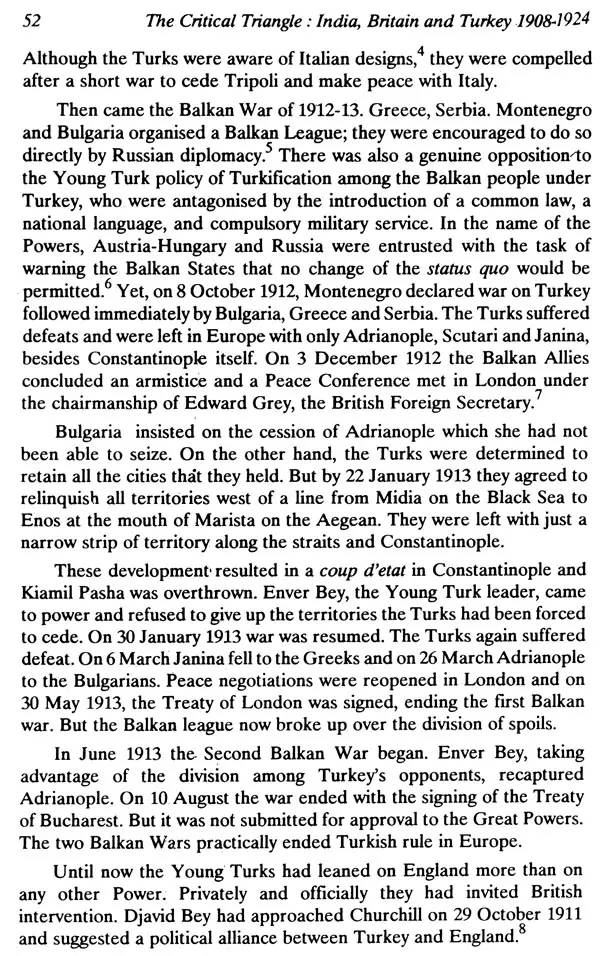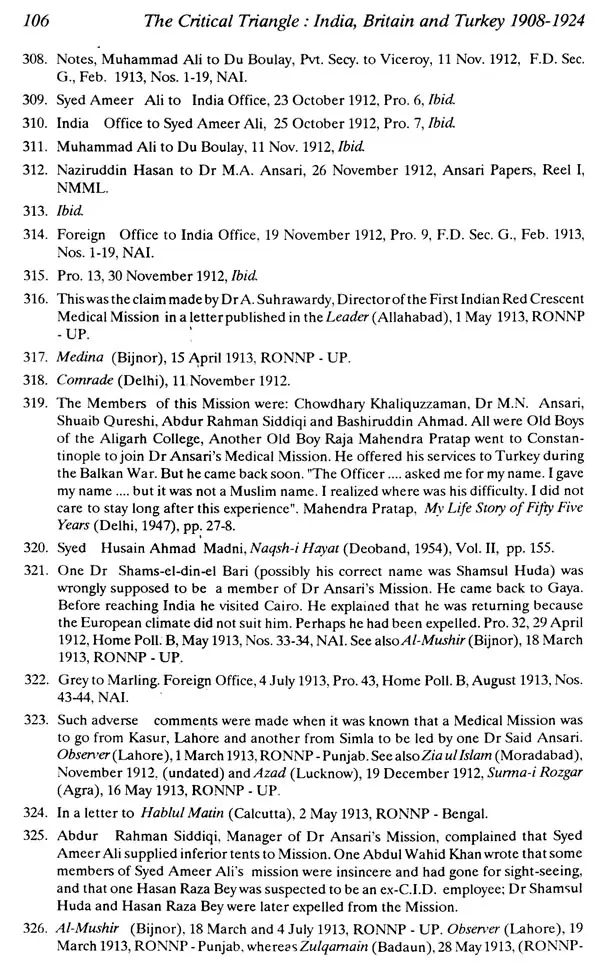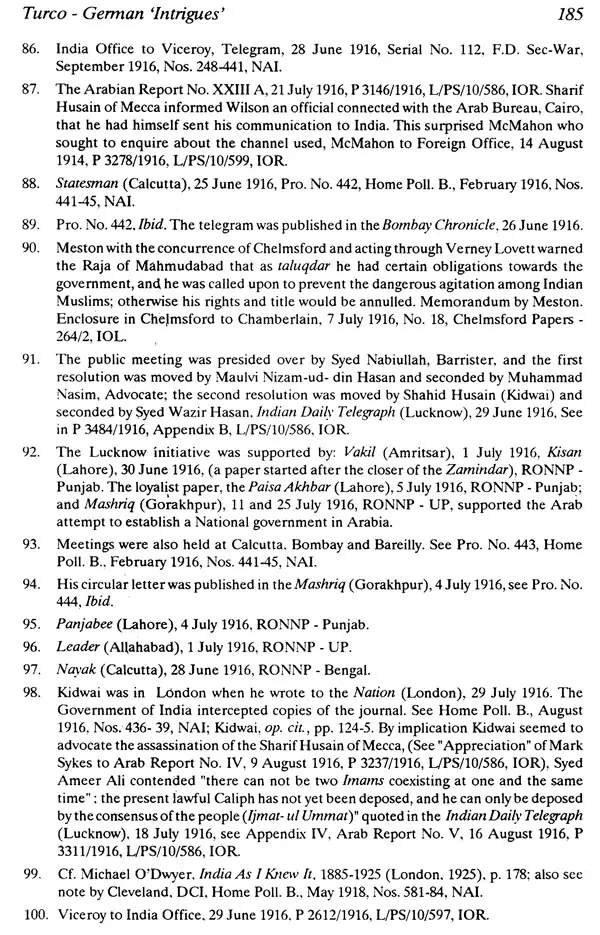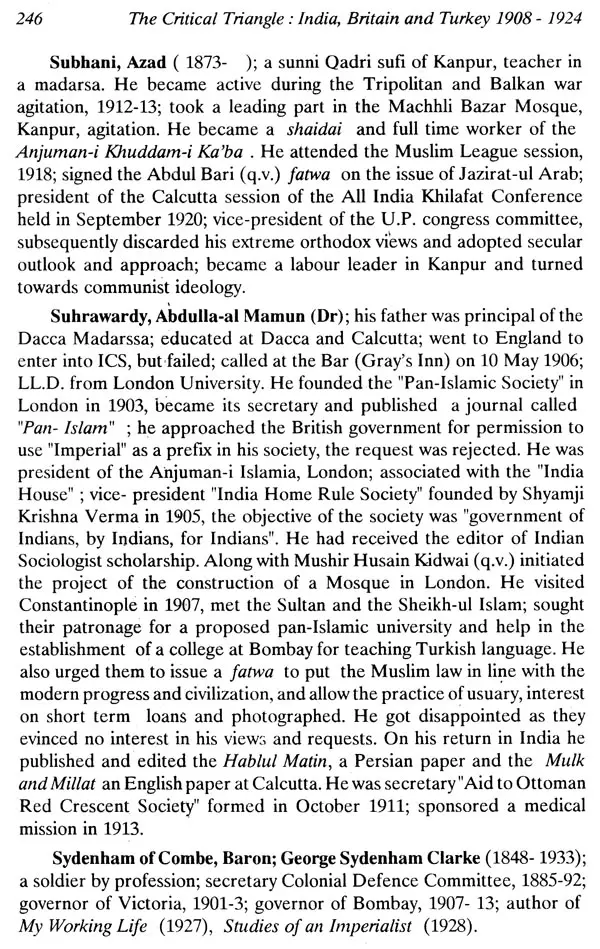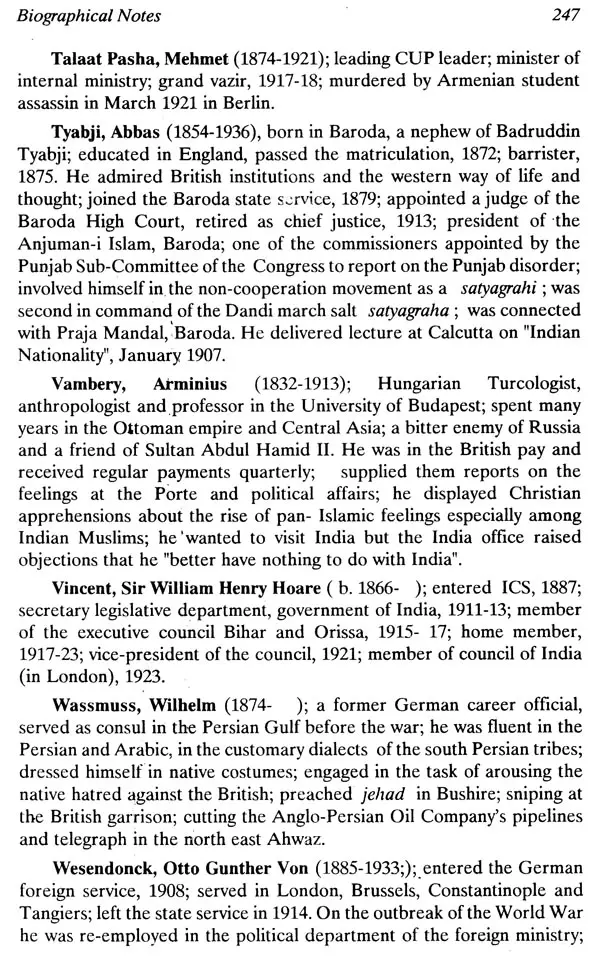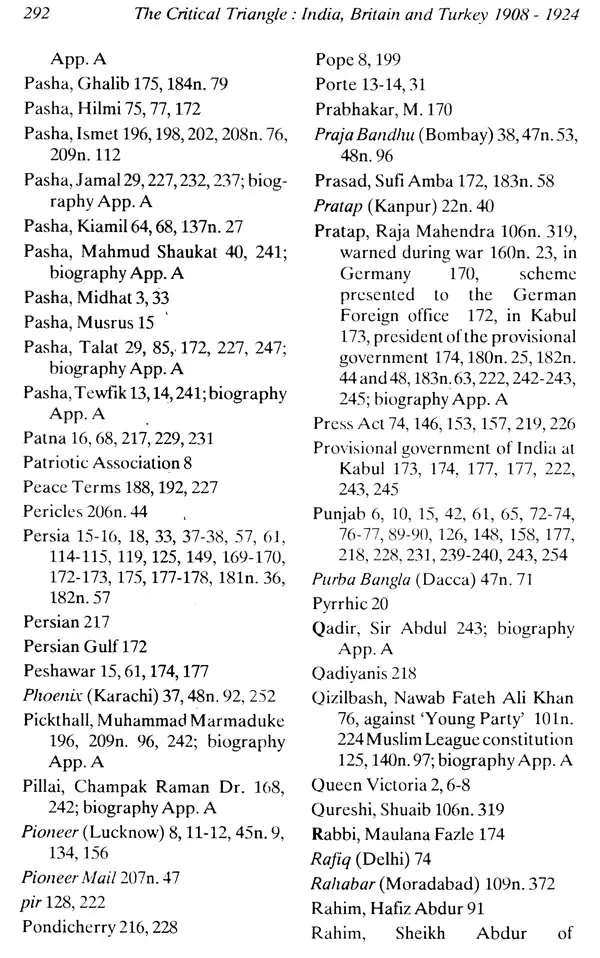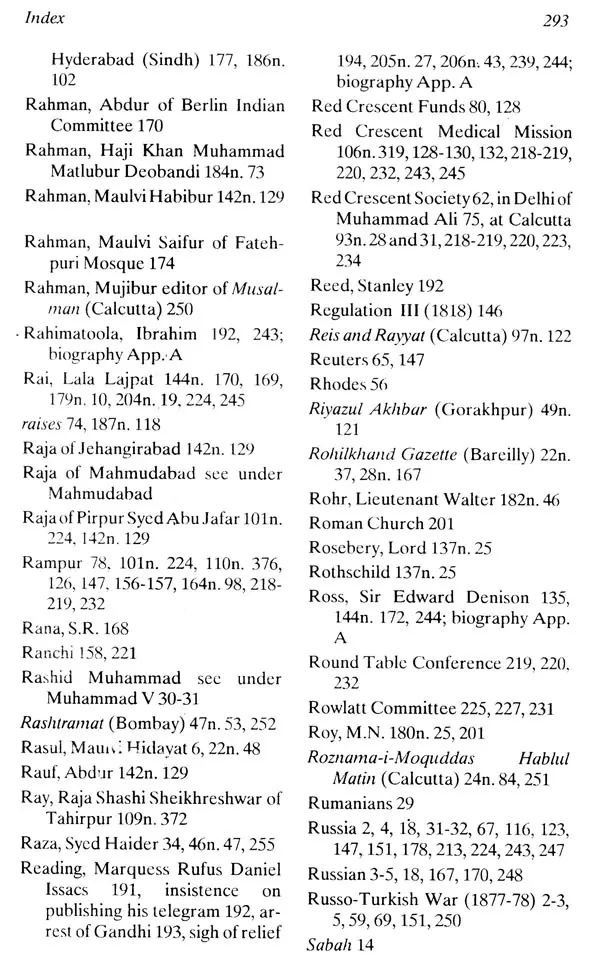
The Critical Triangle
Book Specification
| Item Code: | UAD298 |
| Author: | Raj Kumar Trivedi |
| Publisher: | Publication Scheme, Jaipur |
| Language: | English |
| Edition: | 2017 |
| ISBN: | 9788185263914 |
| Pages: | 304 |
| Cover: | HARDCOVER |
| Other Details | 9.00 X 6.00 inch |
| Weight | 470 gm |
Book Description
Dr. Trivedi has brought into focus the Aga Khan's thesis to bring Muslim states 'in the orbit of the British Empire'; the observation of a bureaucrat that it would be 'better and safer to deal with a combined Indian nation than to bolster up even semi-pan-Islamism which ... would be an unreliable and reactionary factor in the future development of the world' while nationalist's first and greatest concern was to divert the mind of Indian Muslims 'from pan- Islam and confine into the healthy limits of Indian nationalism' and how the 'Jewish' elements began influencing the British policy.
A rupture in· Indian Muslim leadership and coming closer of the western educated Muslims and the lemma upon a more militant platform.
Confounding to see the Turkish case being presented as the cause of Muslim faith. Even the loyalist supporters of British imperialism became uncritically pro-Turkish. Perceptions of the authorities in India and Britain was at variance. In 1918, Indians saw that not only the Turkish empire was endangered but even the very Turkish independence was in jeopardy.
The author has avoided covering the familiar ground on the Khilafat Movement; instead, the work focuses on the developments within Turkey.
The rise of Mustafa Kemal and the forces of secular nationalism rendered the Khilafat, a dead issue in its very homeland. A section of the Khilafatists sought to plead the cause of monarchists and conservatives which totally alienated them from the Kemalists.
Thus, this is an interesting study of the forces of nationalism, imperialism and pan-Islamism, based on intensive research on a large number of documents, private papers, newspapers and other material available in the repositories of India and United Kingdom.
The first chapter is devoted to the study of the prelude to the triangular relationship up to 1908. Indian response to the Young Turk revolution has been analyzed in chapter two. The third chapter deals with the reaction to the Tripolitania and Balkan wars of 1911-1913. The fourth analyses the developments in India under its impact during 1911-1913. The fifth chapter studies impact in India of Britain's war with Turkey. The sixth chapter examines the Turbo-German attempt to use Indian revolutionaries' and pan- Islam cists for creating internal diversions for the British in India. Since the Khilafat Movement itself is a part of the Indian National Movement and its events so often been narrated, an account ~f it is omitted. But, its contribution to Turkish independence and the final estrangement between Khilafat leaders and Mustafa Kemal are discussed in the seventh chapter and the last one is on conclusions. There are two appendices: in appendix A, I have given the biographical sketches of the identifiable persons mentioned in the text; in appendix B, the affiliations of the Indian owned newspapers and journals have been examined in order to indicate the view point they represented.
This study is primarily based on private papers and official records available in the National Archives of India, Nehru Memorial Museum and Library, New Delhi; the India Office Library and Records, the British Museum, and the Public Record Office, London. I have also made extensive use of newspapers which represented the educated opinion. Turkish and German sources unless available in English translation could not be used. However, I have used German Foreign Ministry Records available on microfilm in the National Archives of India, New Delhi.
My debts are many. I am grateful to the Librarians and staff of the National Archives of India, the Nehru Memorial Museum and Library, the Indian Council of World Affairs Library, Sapru House, the library of the Indian Council of Cultural Relations, Azad Bhawan, the Central Secretariat Library, Shastri Bhawan, and the Jawaharlal Nehru University Library, New Delhi; the Uttar Pradesh State Archives, Lucknow; the Maulana Azad Library and the History Seminar Library, Centre of Advanced Study, Department of History Aligarh Muslim University, Aligarh; the library 'of the School of Oriental and African Studies, the library of the University of London, the British Museum, the India Office Library and Records, and the Public Record Office, London; the National Library of Scotland, Edinburgh; the Bodleian Library and the Centre of South Asian Studies, Oxford; and the Cambridge University Library, Cambridge, for their facilities, courteous help and permission to consult and use their material in the preparation of this work.
I would like to thank the Aligarh Muslim University for granting me study leave to pursue my doctoral research at the Jawaharlal Nehru University, New Delhi and at the School of Oriental and African Studies, London. Professor KA. Nizami the then Head, Department of History extended me every help in this connection. I acknowledge it with gratitude and thanks. I also thank the British Council for the award of a scholarship in 1975-76, which enabled me to have access to the materials available in the United Kingdom. During my stay at the School of Oriental and African Studies, London, as a non-degree research student, I received personal attention of Professor K.A. Ball hatchet, I thank him for his ungrudging help and advice. I also thank Dr. P.G. Robb for his help and assistance.
Book's Contents and Sample Pages
